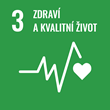
Informace o projektu
Vstříc 3D modelování mozkových bariér
- Kód projektu
- 8J21DE001
- Období řešení
- 1/2021 - 12/2022
- Investor / Programový rámec / typ projektu
-
Ministerstvo školství, mládeže a tělovýchovy ČR
- Aktivita MOBILITY
- Německo
- Fakulta / Pracoviště MU
- Lékařská fakulta
- Spolupracující organizace
-
Universität Bayreuth
Two-years mobility project between the Czech Republic (Masaryk University) and Germany (University of Bayreuth) with a focus on 3D modelling of the brain barriers.
Choroid plexuses (CPs) of the brain ventricles play a crucial role in brain homeostasis maintenance. Besides the secretion of the cerebrospinal fluid (CSF), the epithelial cells of CP form the blood-CSF (B-CSF) barrier, an interface between the circulating blood and CSF. Moreover, there is a growing body of evidence implying the involvement of the CP and B-CSF barrier in different neurological disorders such as subarachnoid hemorrhage (SAH), nerve injury, chemotherapy-induced neuropathy, and Alzheimer’s disease. However, the B-CSF barrier is among the least studied structures of the central nervous system (CNS) despite its clinical importance.
Our group has been focused on investigating the pathology and therapeutic potential of the CP and B-CSF barrier using in-vivo and in-vitro (cell lines grown as monolayers on flat surfaces) models. Our in-vitro cell models (Z310 cell line and primary cells) aim to reproduce B-CSF barrier functionality, plus allow for genetic manipulation and enable us to study and control the passage of active component through the barrier in order to understand its properties at the cellular and molecular level.
In-vitro two-dimensional (2D) culture systems, in general, are simple, fast, and cost-effective; however, the 2D culture system does not resemble the environment in which cells experience in the brain tissue. Therefore, a significant difference between the 2D cell monolayers and in-vivo characteristics has been reported. Impaired cell-cell communication and reduced intercellular contacts are among the limiting factors of a 2D culture. Nevertheless, three-dimensional (3D) systems can capture complex physiological responses and could closely resemble in-vivo conditions.
The goal of this project is to develop 3D CP epithelial cell culture and 3D blood-barin barrier (BBB) model employing tissue engineering techniques and biomaterials in order to support advanced studies on the structure and function of the B-CSF barrier in physiological and pathological conditions.
Cíle udržitelného rozvoje
Masarykova univerzita se hlásí k cílům udržitelného rozvoje OSN, jejichž záměrem je do roku 2030 zlepšit podmínky a kvalitu života na naší planetě.


